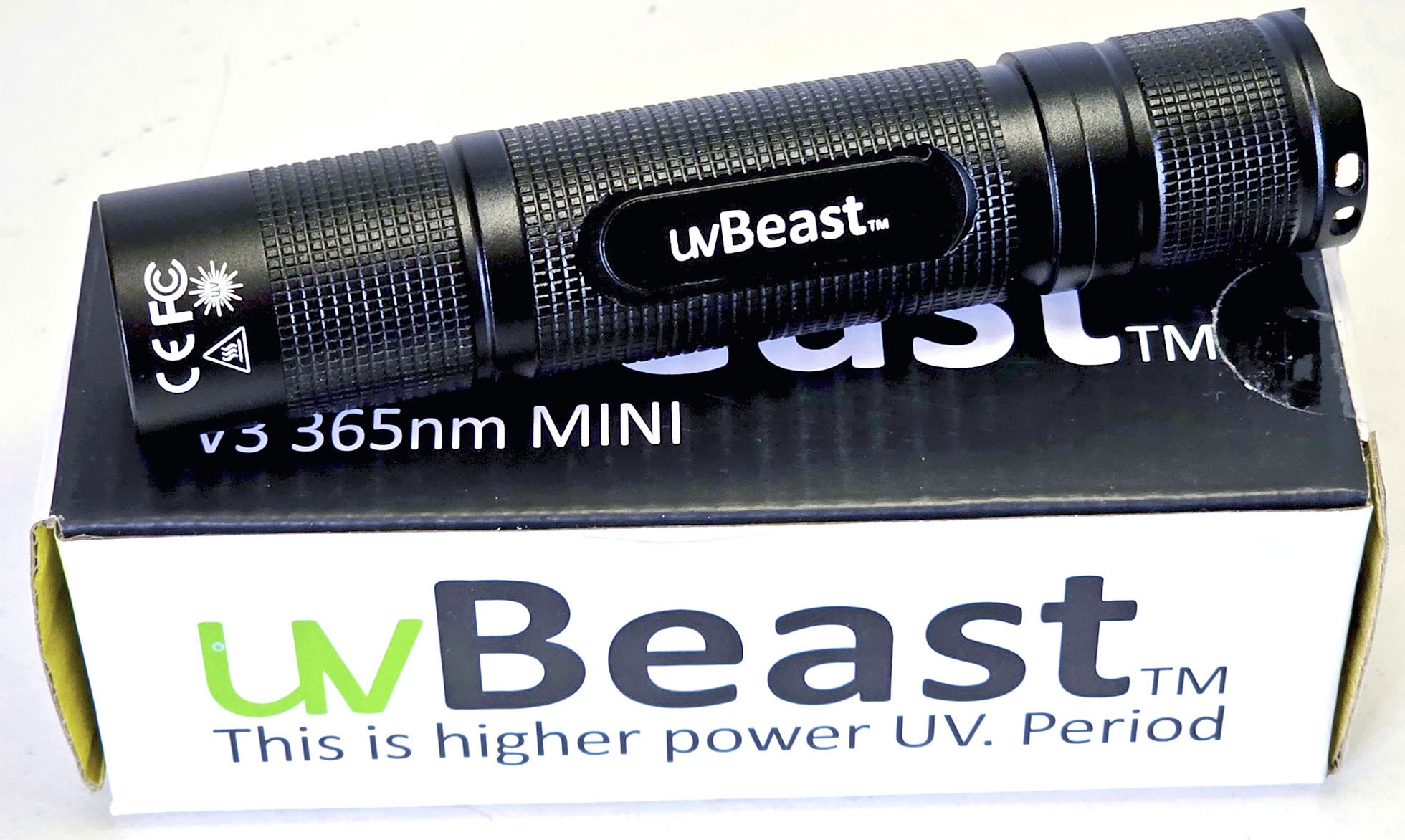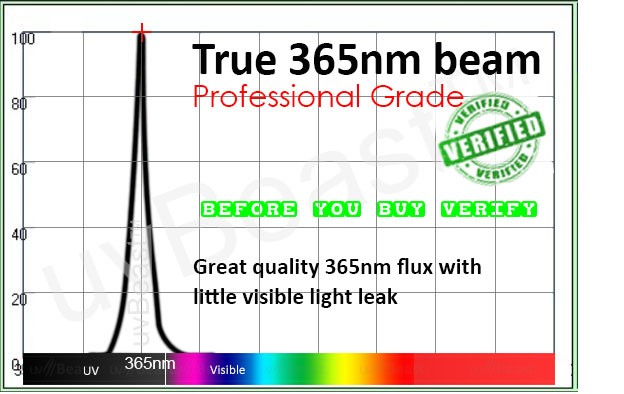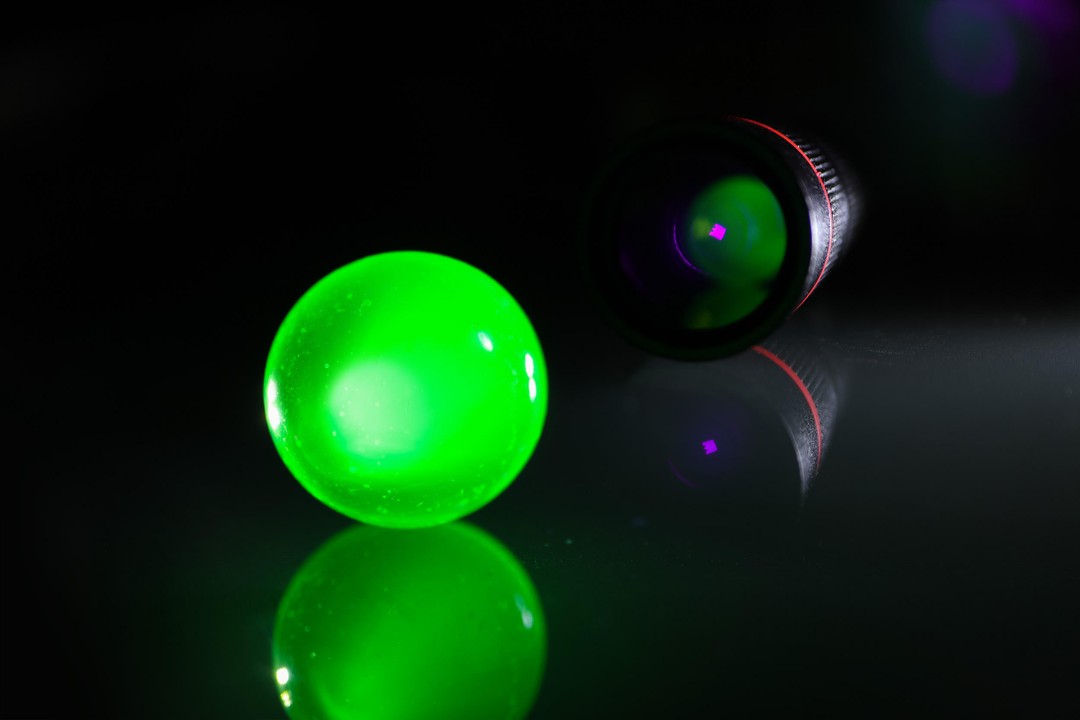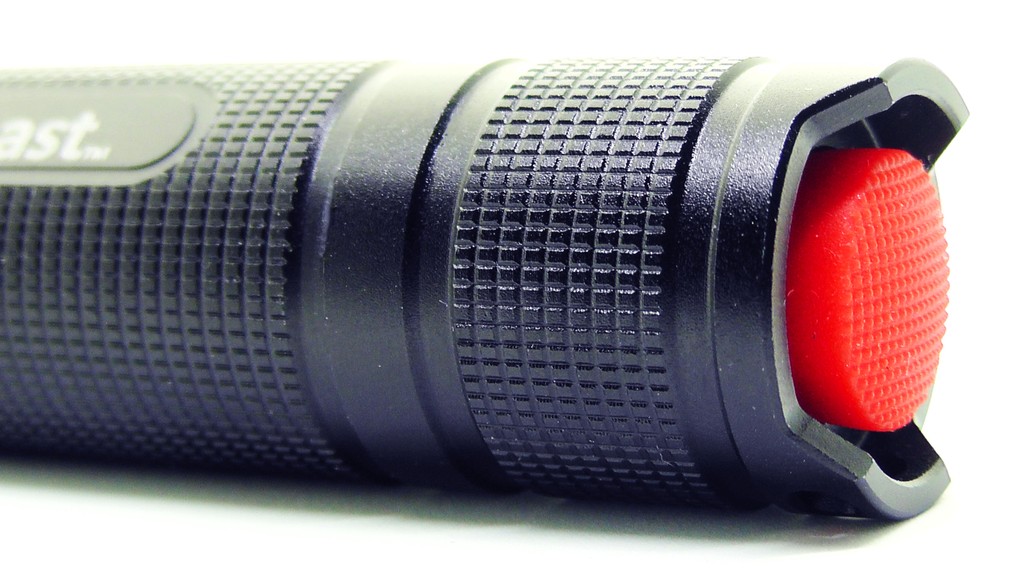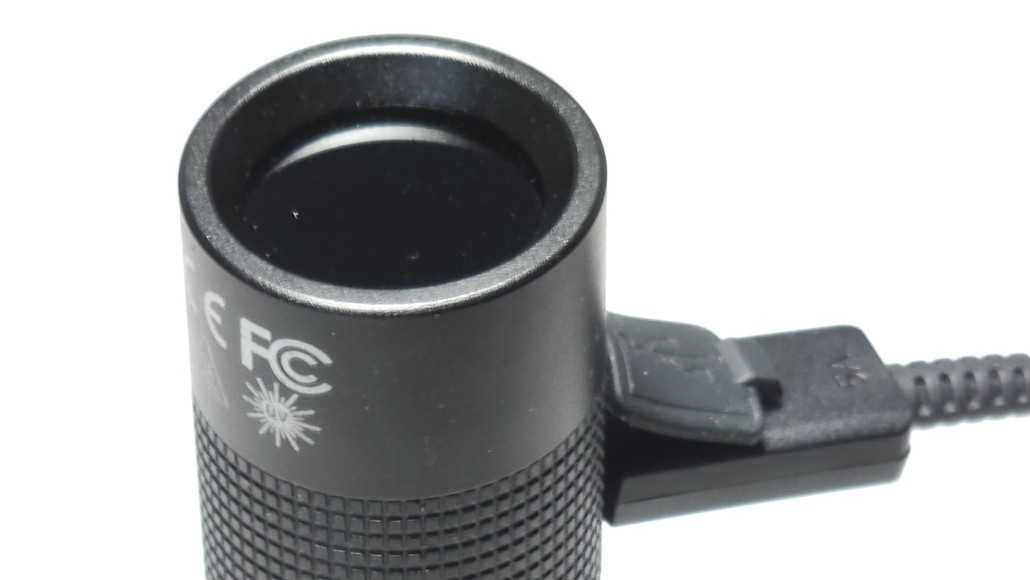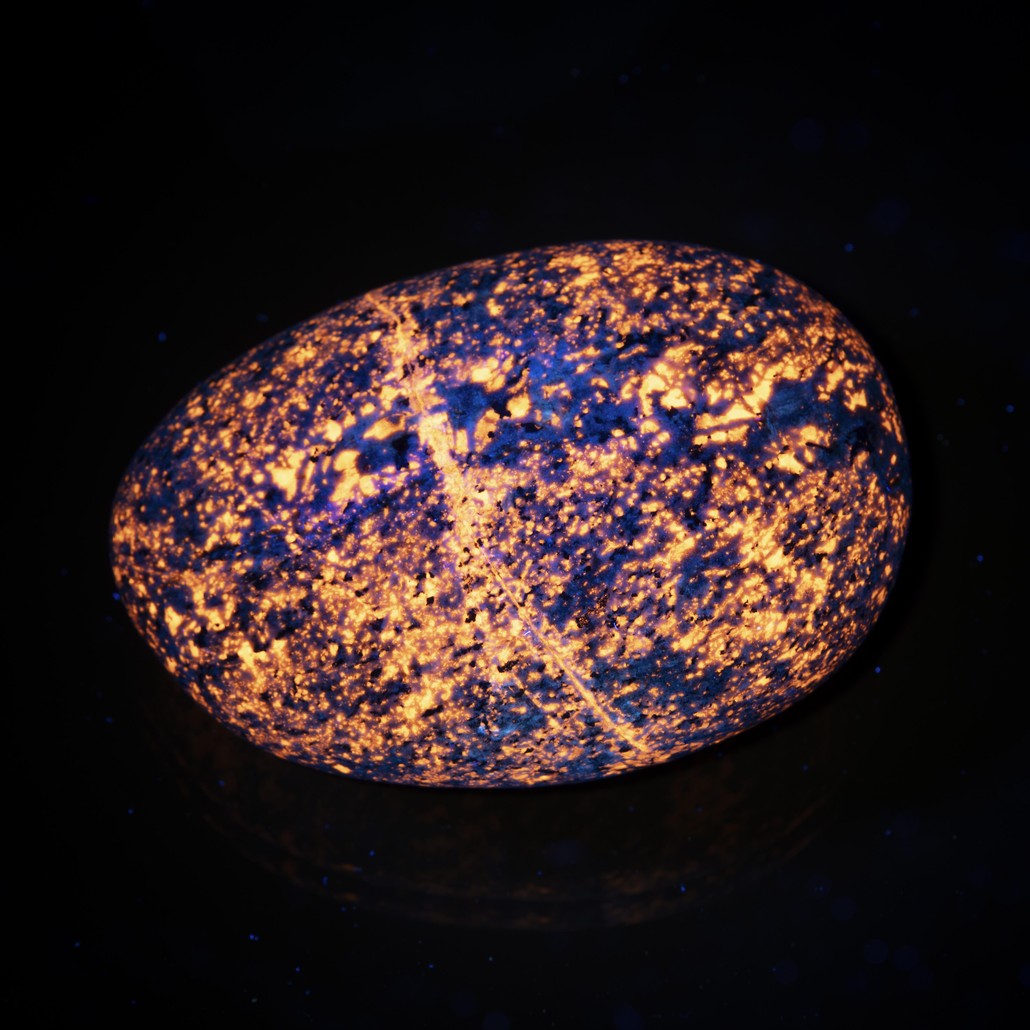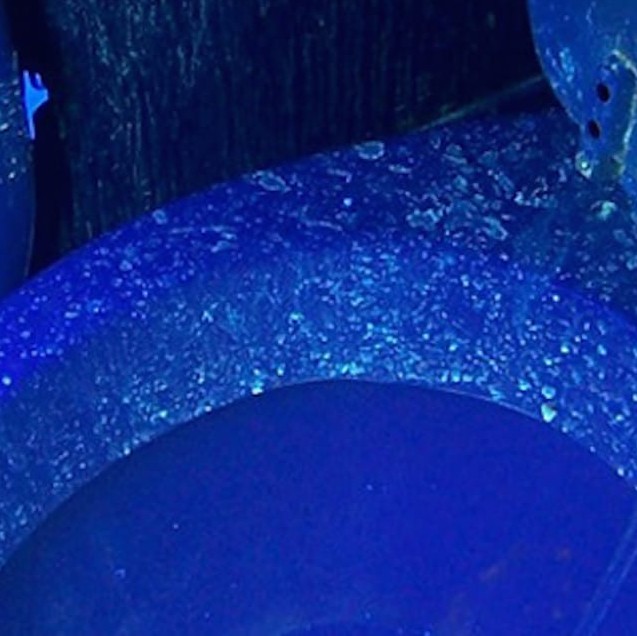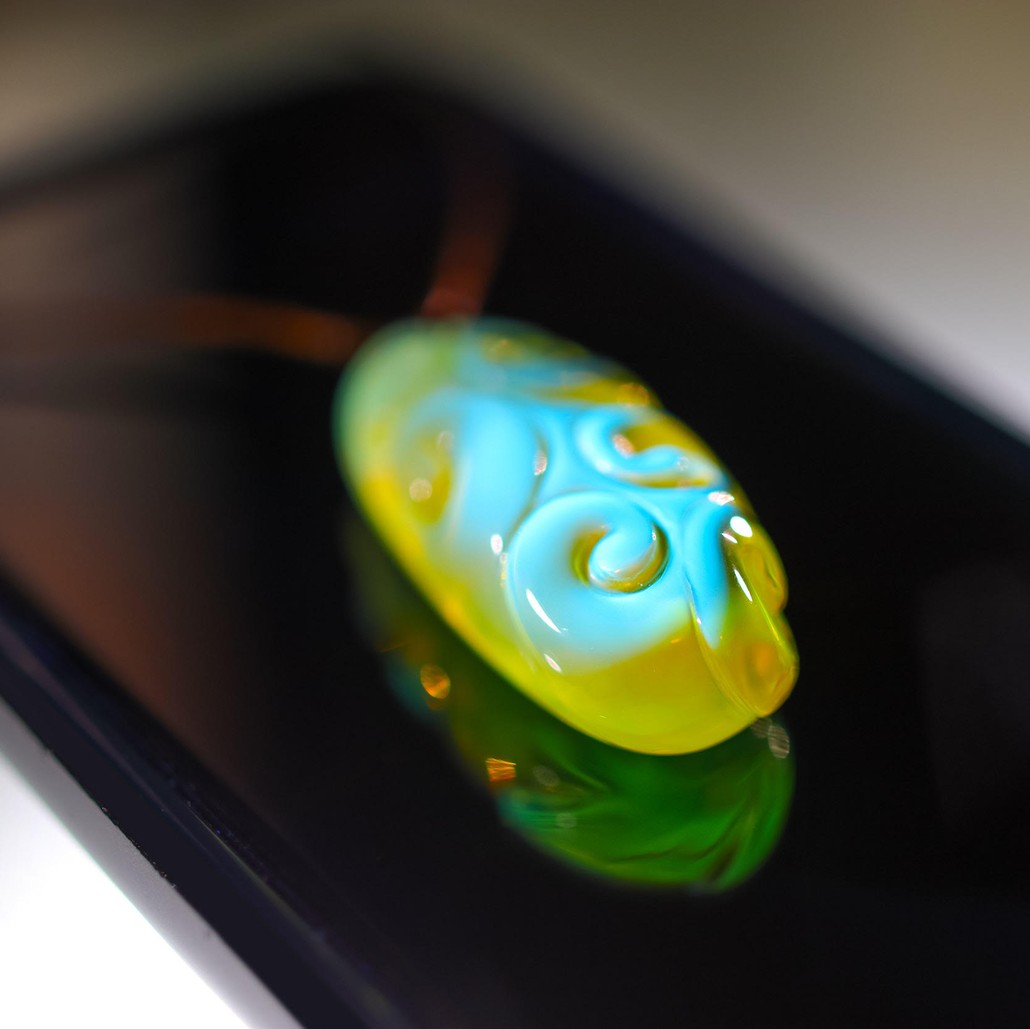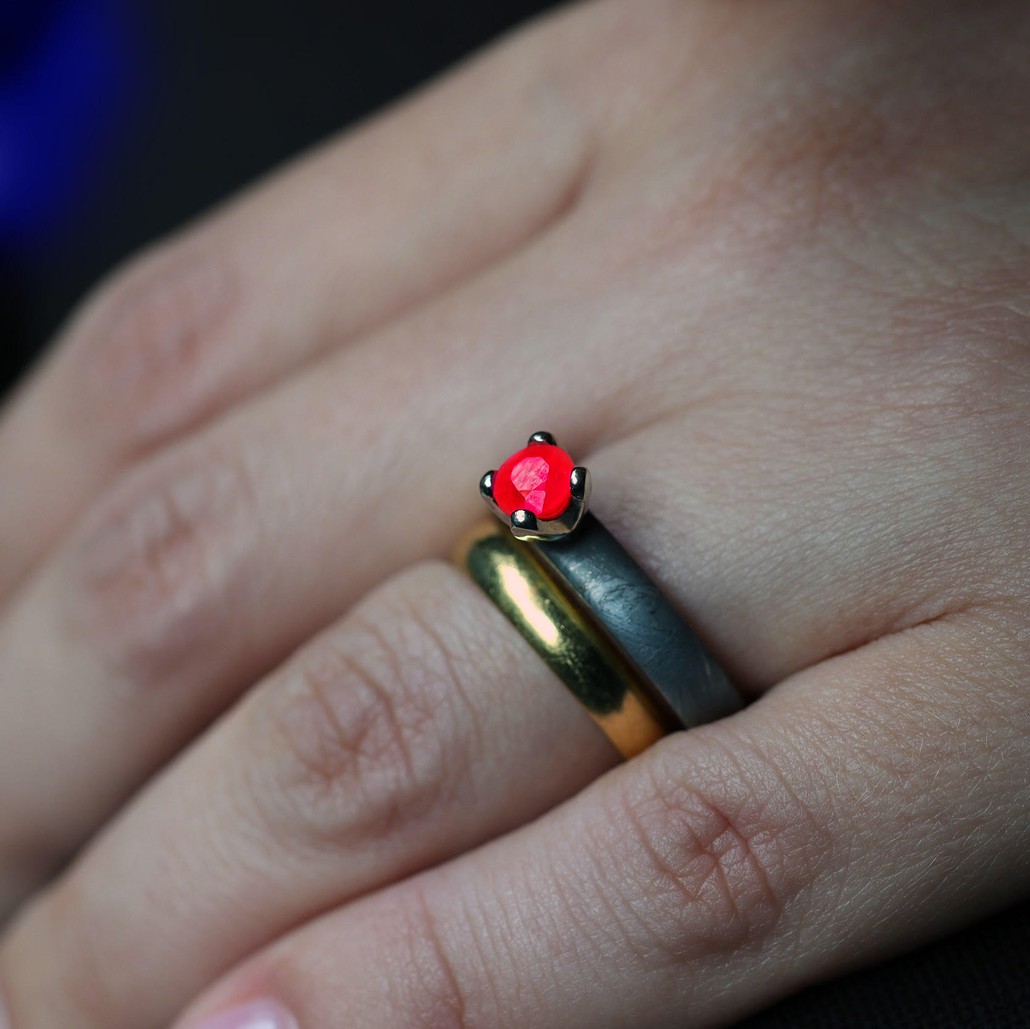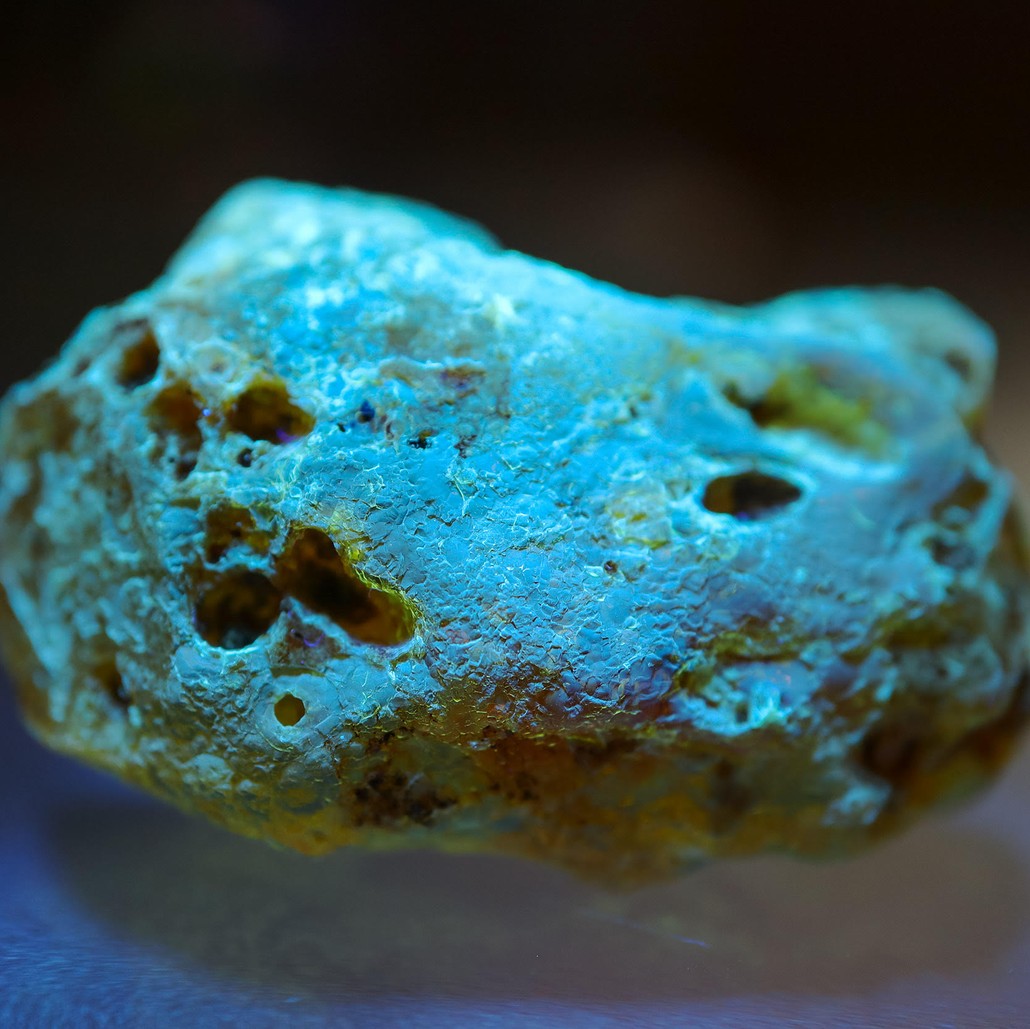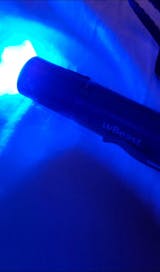"High power UV is our speciality". Ships from the USA. Fast and free. LIMITED STOCKS
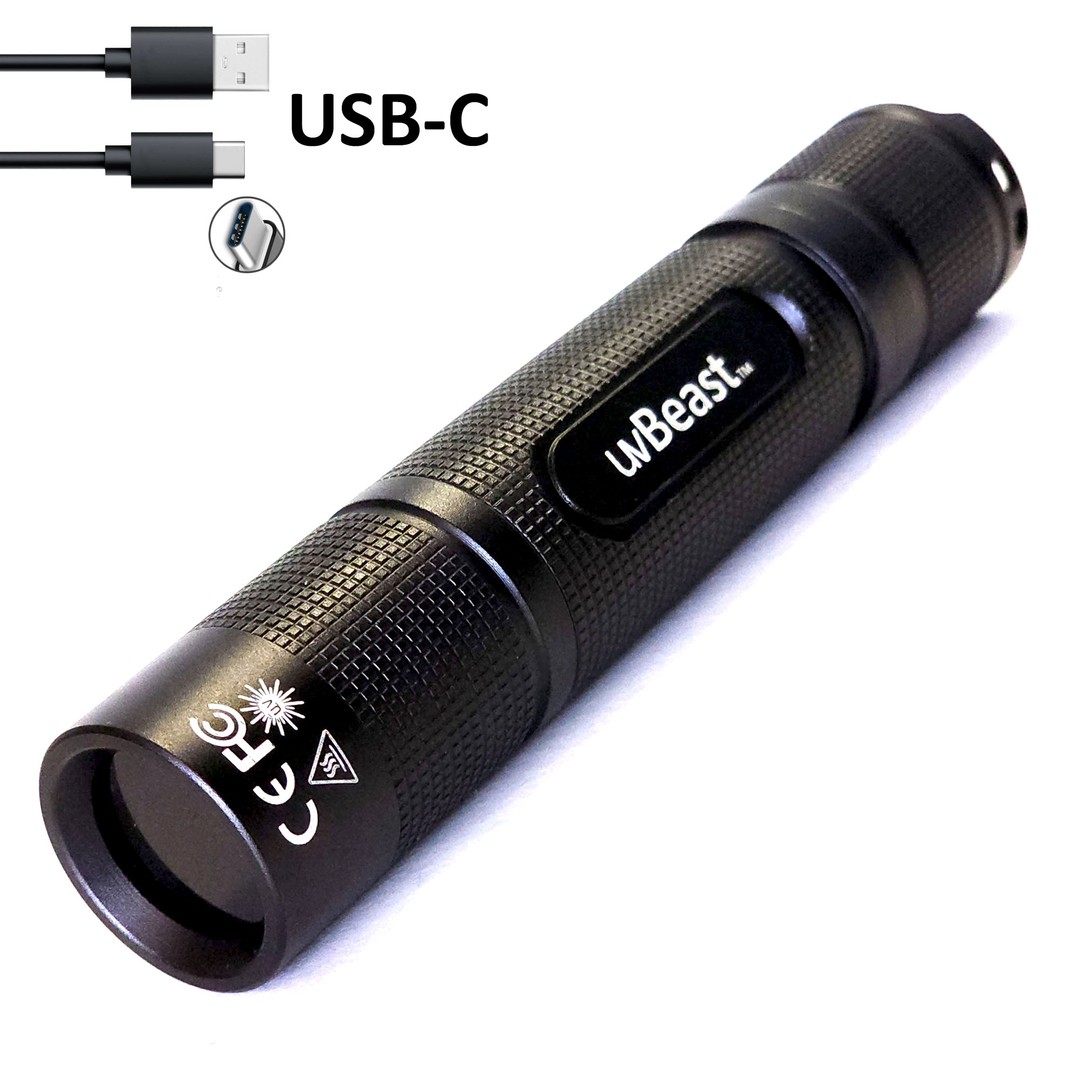
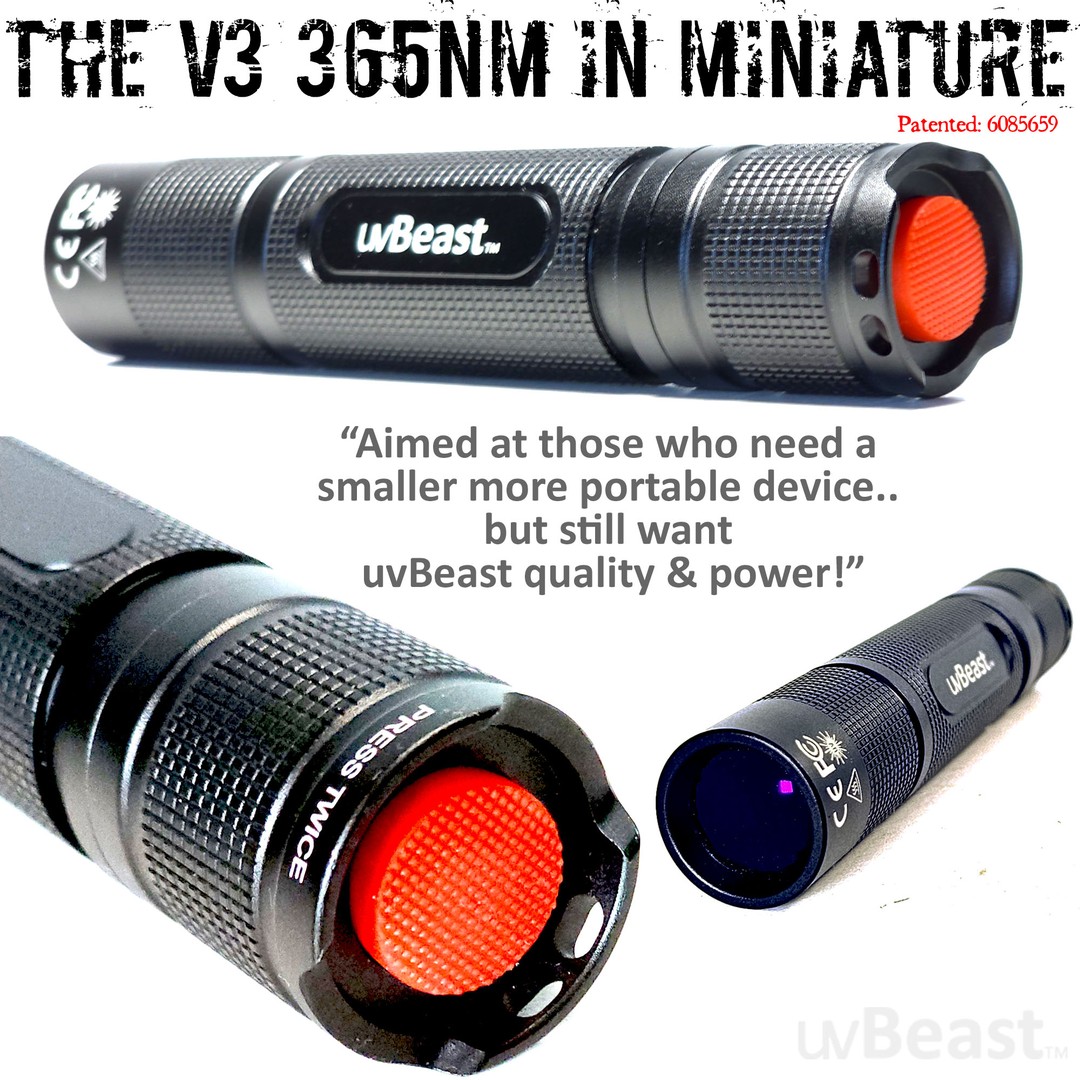
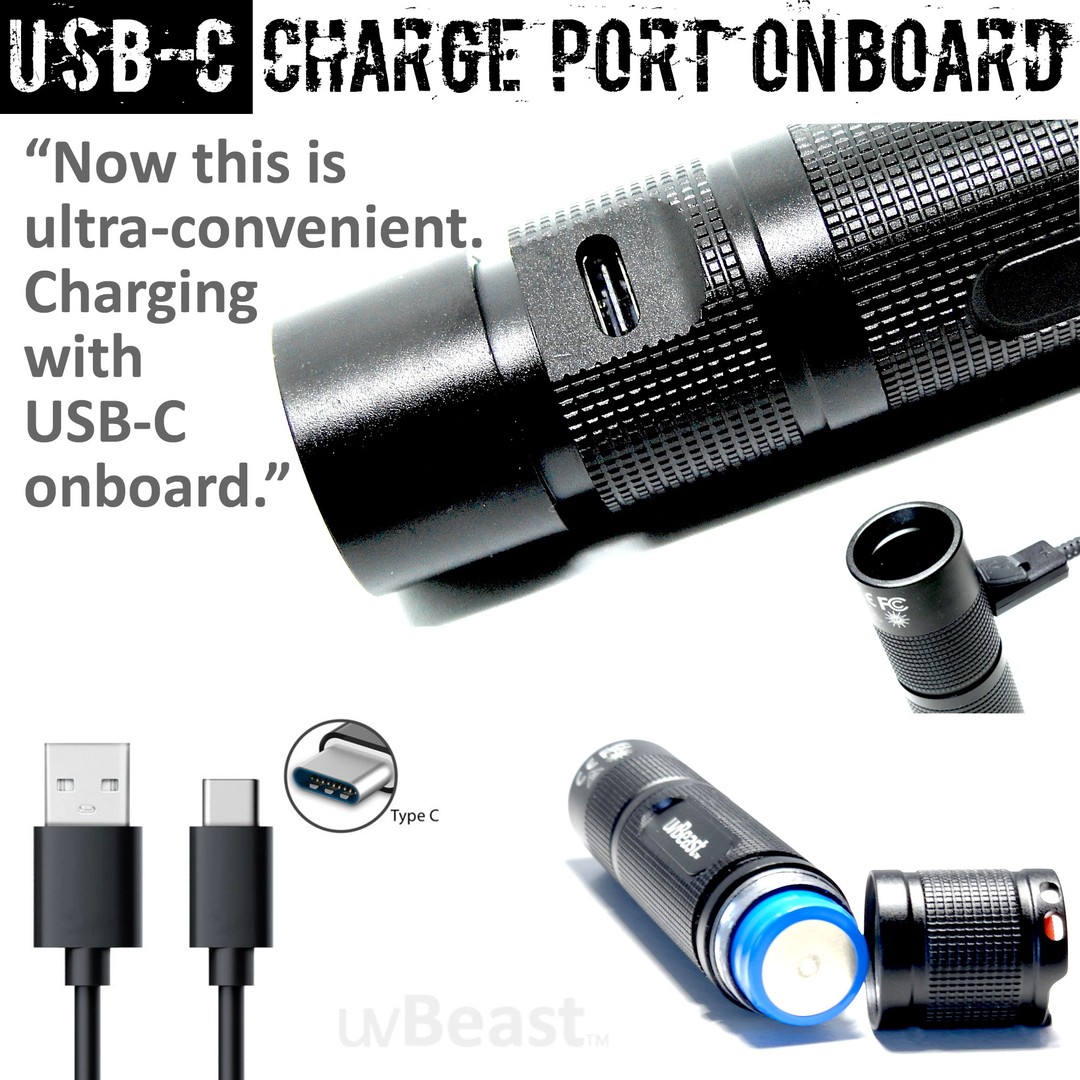
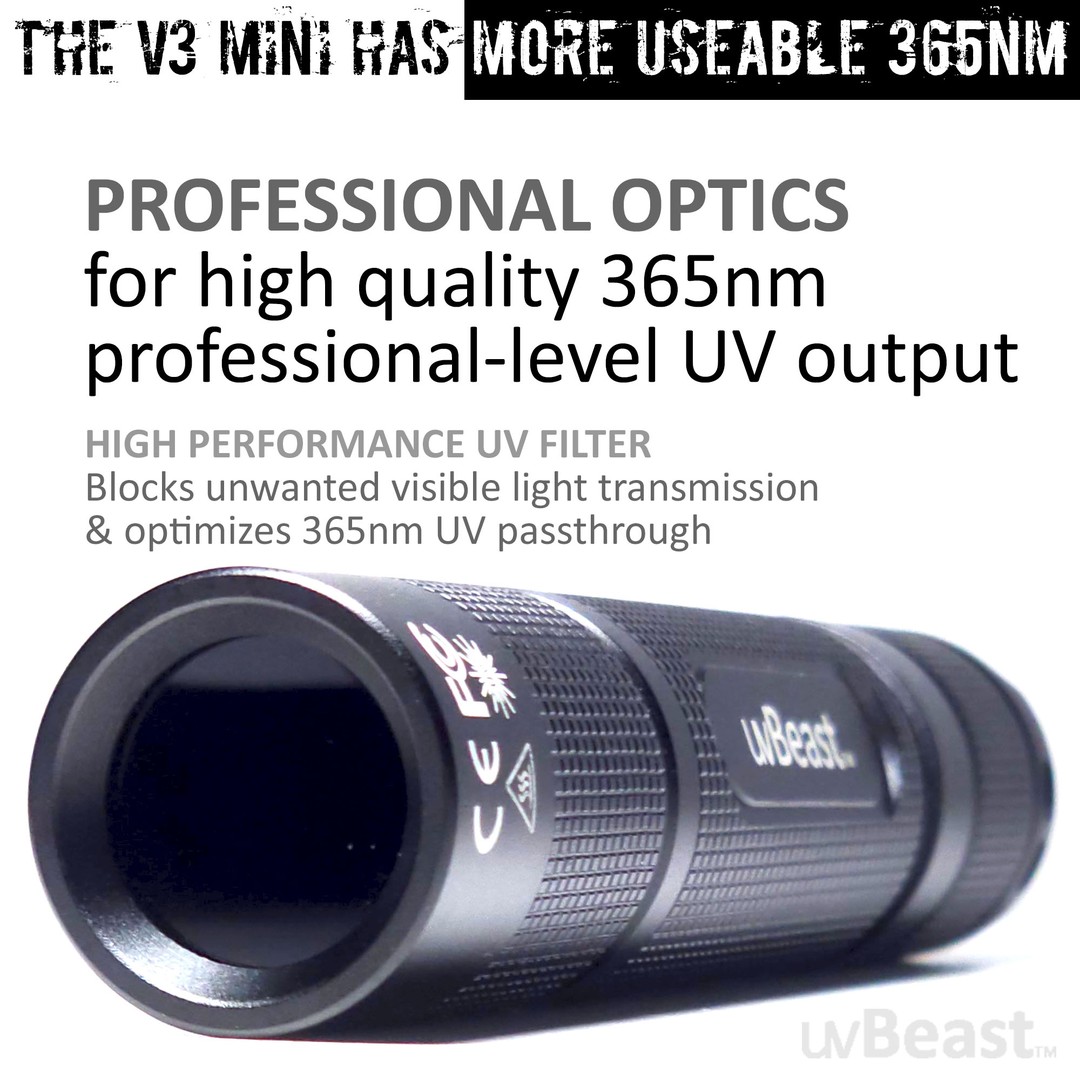
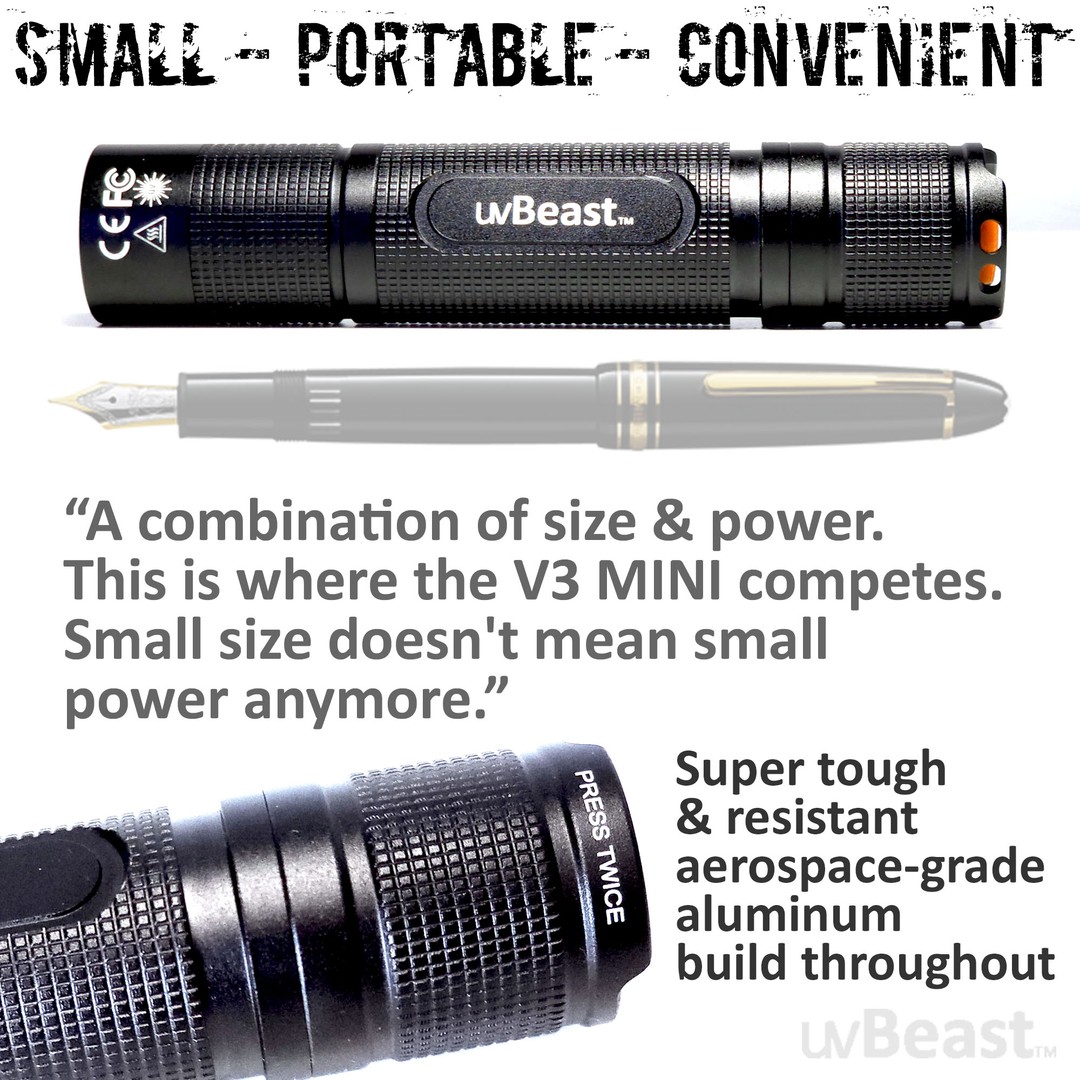
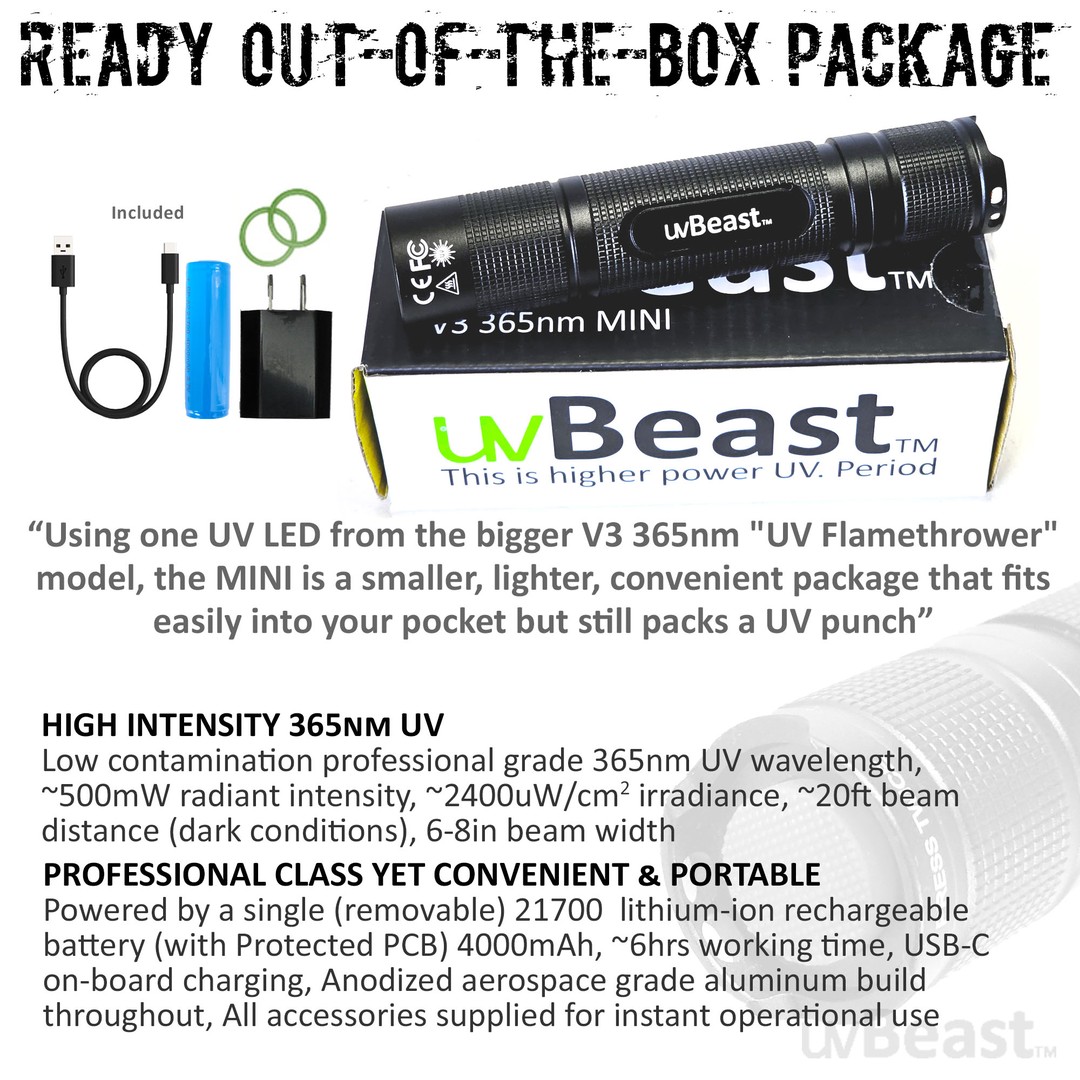
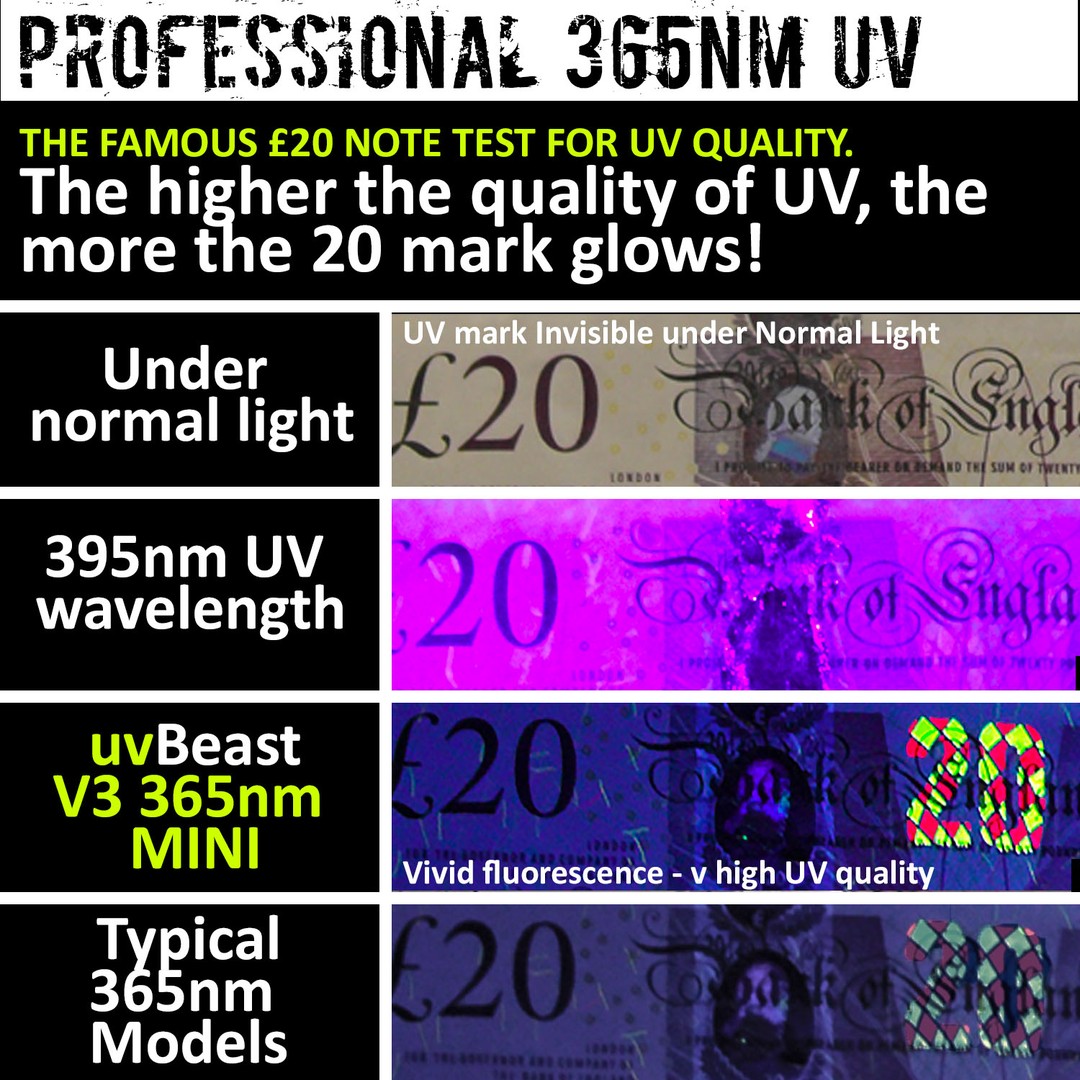
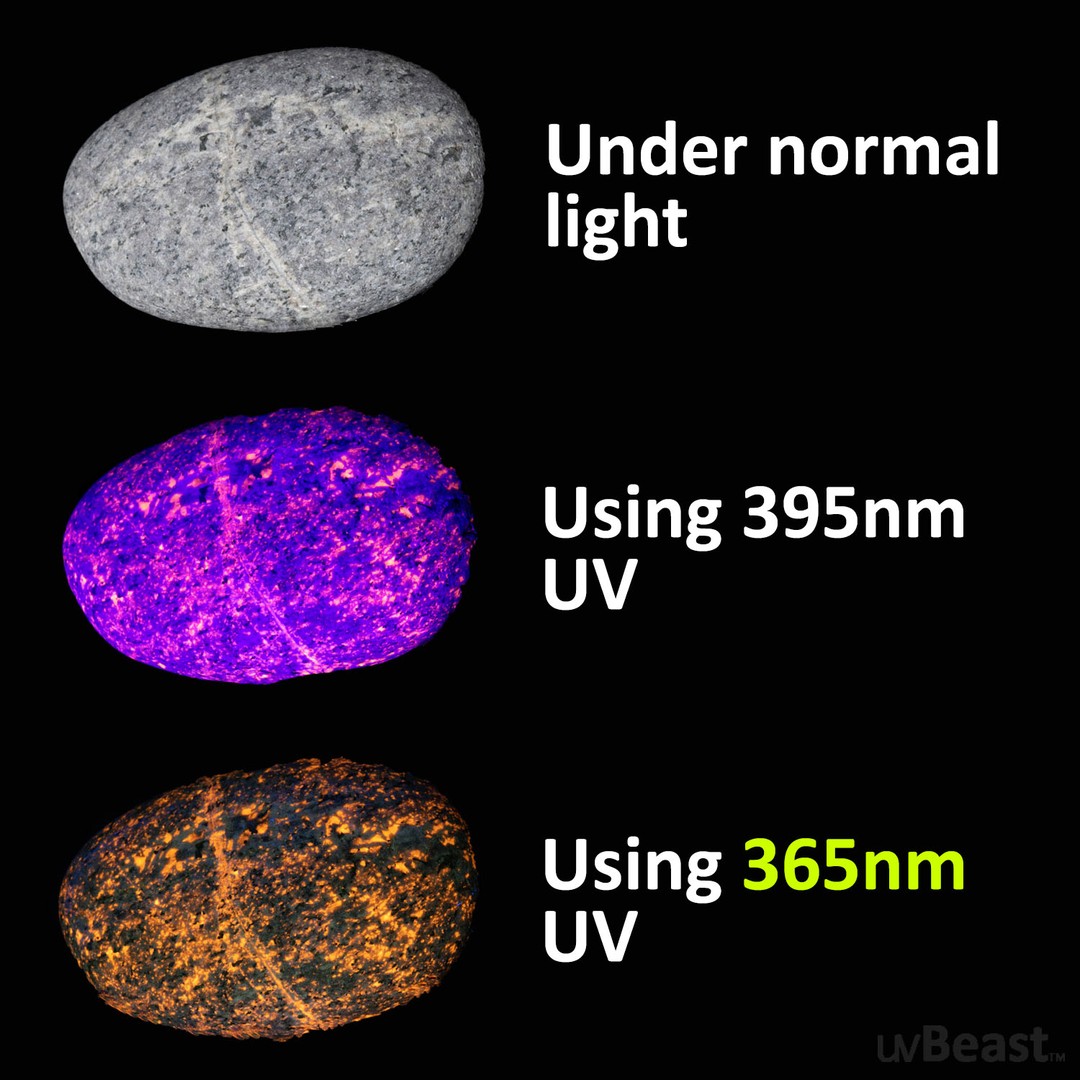
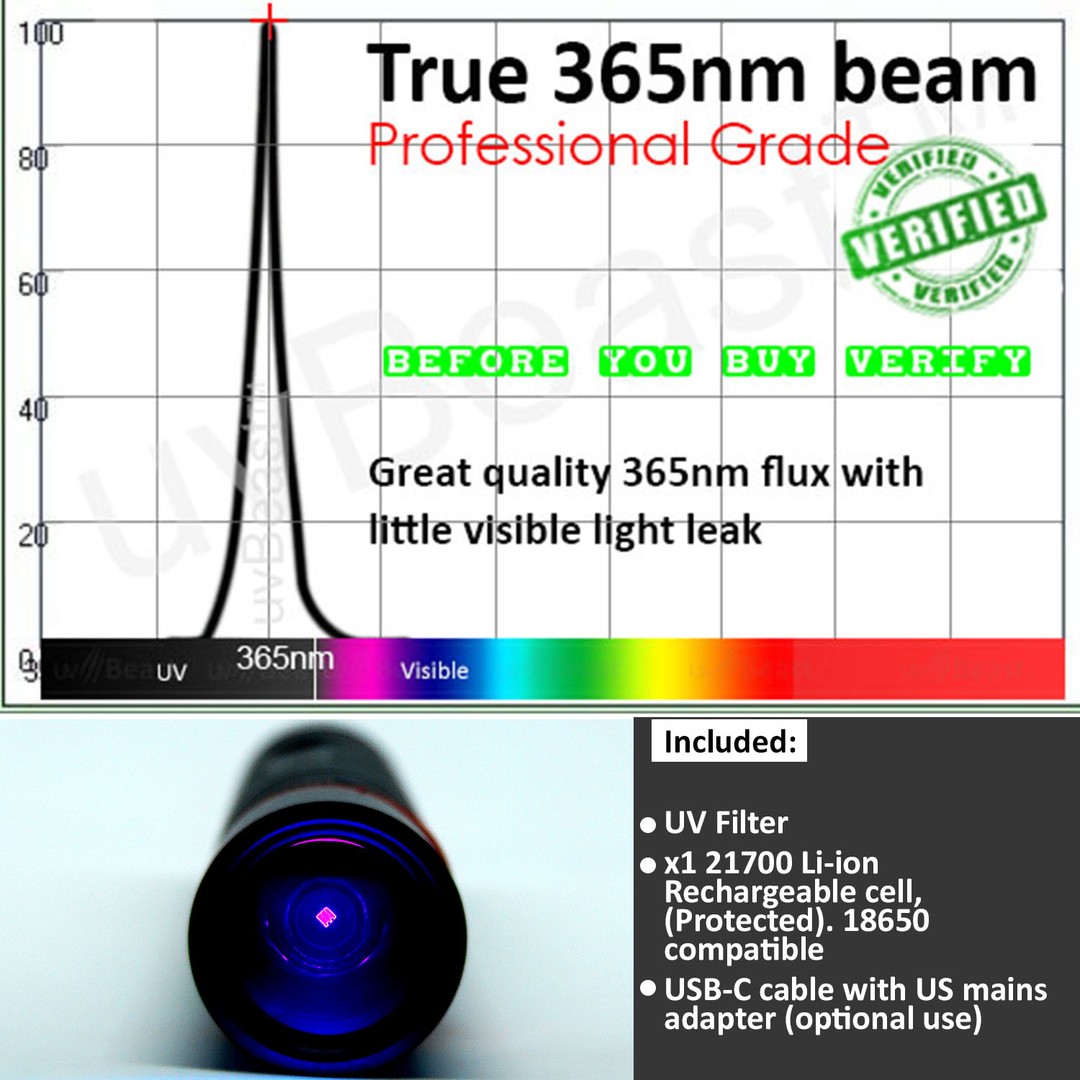
uvBeast V3 365nm MINI Filtered - Black Light UV Flashlight - USB-C - Professional Grade
BEST SMALL 365nm
BEST SMALL 365nm
"For it's size and portability, it really does pack a punch with its 365nm brightness." -Terry Naylor
V3 365nm MINI - Black Light UV Flashlight - FILTERED Ultraviolet - Rechargeable 21700 USB-C charge Port - Professional Grade HIGH POWER UPGRADED 5 core LED – USA Stock
Editor’s Recommendation: “Aimed for those who are after the delicate balance between portability and UV power. This is where the V3 365nm MINI competes! Don’t let the size leave you wondering if this is underpowered - an oft common issue at this size. 365nm UV optical output is impressive for its size. Even I was impressed with the results – great contrast and very little unwanted visible light spill. And with the latest upgrade, it just got even better!”
100% Money Back Guarantee
"For it's size and portability, it really does pack a punch with its 365nm brightness." -Terry Naylor
V3 365nm MINI - Black Light UV Flashlight - FILTERED Ultraviolet - Rechargeable 21700 USB-C charge Port - Professional Grade HIGH POWER UPGRADED 5 core LED – USA Stock
Editor’s Recommendation: “Aimed for those who are after the delicate balance between portability and UV power. This is where the V3 365nm MINI competes! Don’t let the size leave you wondering if this is underpowered - an oft common issue at this size. 365nm UV optical output is impressive for its size. Even I was impressed with the results – great contrast and very little unwanted visible light spill. And with the latest upgrade, it just got even better!”
What are people saying about the V3 365nm MINI?
★ ★ ★ ★ ★
" I will be buying another one. I've purchased MANY cheap UV flashlights and they never last. I don't know why it's so hard to make a decent on-off switch. I've only had my uvBeast a week, but I can feel the quality in the switch and I'm confident I won't be throwing it in the trash any time soon. I've spent WAY more money buying multiple cheap lights than what I spent on uvBeast."
—BiteTheLime, USA
★ ★ ★ ★ ★
“Great UV flashlight, lots of power in such a small package.”
—Jess, USA
★ ★ ★ ★ ★
"UV flashlight? This is the one. It’s a badass UVbeast it’s way better than those that we use on AC checking for leaks, looking at Jade and all sorts of stuff”
—YenBob, USA
★ ★ ★ ★ ★
“Perfect for dye detection in automotive field. Beats out any tool truck brand UV light we had in the shop. Built in charger is a huge plus too”
—Jacob Howard, USA
★ ★ ★ ★ ★
"Awesome and very powerful. This is beyond expectations works really well with any UV reactive paints or materials. Would highly recommend to anyone looking for a great UV light for anything from checking cash and ID's to using it for UV stain investigation.”
—S. Gorin, USA
★ ★ ★ ★ ★
“Would buy again. Very happy with the performance and size of this light. Will be recommending this to my fellow co-workers. Battery life holds up longer than my other UV light that is the same size and specs even tho this one is brighter and outperforms my other light (using same 18650 battery). Also, this light doesn't get as hot so quickly as my other light.”
—Justin, USA
★ ★ ★ ★ ★
"Amazing product works great! best value for the price. The weight and thickness lets you know you're holding a quality product. The UV light is powerful enough to work in a room with the lights on AMAZING! A MUST HAVE FOR UV CHECKS.”
—Luis, USA
★ ★ ★ ★ ★
“Works better than I thought possible. Although a little pricier than I would have liked, the quality is top notch and the ability to charge it with a type C cord is leaps and bounds more convenient than having to buy new batteries or remove the battery to recharge it. As far as the UV lighting, it couldn't be better. This is the real legitimate ULTRAVIOLET LIGHT, not some purple tinted flashlight or whatever. This UV light will leave nothing hidden. It's worth every penny.”
—Tyler Secrist, USA
Small Size But BIG UV Power at 365nm Wavelength
PRO-GRADE 365nm UV
365nm UV is considered as the Gold Standard. Moreover, this is filtered 365nm wavelength that professionals and specialists use. We know. We supply them. This is NOT to be confused with unfiltered 365nm UV. This is UV light at its purest.
WHY uvBEAST V3 MINI?
Aimed at those who need a smaller more portable device but still want uvBeast UV power - at 365nm! Using a UV LED from the larger and renowned V3 365nm, the MINI is a smaller, lighter, convenient package which slips into your pocket but still packs a hefty UV punch!
INTENSE 365nm UV
Avoid a beam that disappoints. Useless in normal light, and poor results in the dark. Most models are dogged with too much visible light contamination. We’ve simply designed those out. With little visible light leak yet powerful enough, you can use it during the day in normal light. And in the dark it’s effective to 20-30 feet away.
IT'S A TOUGH COOKIE
Aerospace grade anodized aluminum build throughout. Tough and light. This won't corrode nor rust. It'll give you years of faithful service!
ONBOARD CHARGING
At last, charging of the removable 21700 battery without the hassle of taking it out! Relief. Simply connect the supplied cable to the USB-C port to charge. That's it! You won’t need to lug around a separate charger!
-
INCLUDED x1 Lithium-ion 21700, 3.7v 4000mAh; Protected (PCB). 18650 compatible (must be at least 67mm long)
-
INCLUDED US mains adapter (for mains supply charging)
-
Finish: Anodized Black
-
Material: Aerospace Grade Aluminum
-
Special Features: FILTERED 365nm UV high radiant intensity
-
Average working time: 5-6 hours on a single charge
-
Average Battery Life: 750-1000 charge cycles
The Problem With Other (small size) 365nm UV Flashlights
The single most common complaint with small size 365nm UV wavelength flashlights is that they leave you underwhelmed. We know because we take the time to listen AND improve. Their small sizes don’t produce an intense enough 365 nanometer UV beam for most of you and leave you wanting more.
We're Different.
Many in the market for smaller sized ultraviolet flashlights know the uvBeast brand for its sheer power and quality of UV light. Most notably because we are..
Inspired by Feedback From Our Users!
What's in V3 365nm MINI?
Think of it as the uvBeast that you can tuck into your back pocket. Sure, there have to be some trade-offs with size, but we’ve made up for it to give you a smaller, more convenient yet same quality UV package.
-
Low contamination filtered UV 365nm (optical output at around 500mW pure 365nm)
-
Same single UV LED as the larger V3 “Flamethrower” 365nm
-
More convenient USB-C charging on board (not to be confused with micro-USB). USB-C cable supplied
-
US mains adapter supplied for optional mains power source
-
Powered by a 21700 rechargeable lithium-ion battery (supplied) to give the MINI the juice it needs. Cell is removeable & interchangeable with 18650 sizes (18650 must be at least 67mm long)
User Centered Design
Prototyped & tested with demanding users like you. Then we put into production. Our R and D people are not asleep. We talk when we must and shut up and listen to feedback when we need to. We're always moving with innovation and new product developments. This time we enter the fray with size, portability, and convenience with as much optical uvBeast power we can muster. With user generated wish lists and rigorous user testing, you’re getting a proven and field tested product and avoiding a dud which nobody wants.
UV On a Different Level. Entirely
Same high octane, yet low contamination uvBeast UV as the V3 365nm. The viewing quality will really impress you. Filtered 365nm UV is considered as the gold standard sweet spot for UV users. uvBeast optimized 365nm UV is in a different league, with little visible light leak, which is exactly what you want in a UV light.
Claim to Fame?
An effective, yet low maintenance pocket-sized package.
Powered by a single 21700 rechargeable battery (supplied), you’ll save on the hassle - not to mention the replacement cost - that comes with non-rechargeables. With onboard charging you'll be spared from the necessary annoyance of having to remove them every so often for external charging. Ughh.
It’s pocket-sized but made of aerospace-grade aluminum, so it won’t fall apart, and you can toss this around without much worry. It’s been field tested by picky people, so you’ll be getting something that’s proven instead of an unknown “could-be-a-dud” piece of kit.
Overall, we believe this is an impressive contender for those looking for small size, convenience, but UV 365nm which does not disappoint
Professionals use our UV lights. If it's good enough for them, it'll be great for you.
It'll bring seismic improvements in the way you'll use UV.
Are you disappointed with or worried about inferior (UV) results? uvBeast UV flashlights are solely designed with that inferiority taken right out. Higher power UV will give you results that will astonish you.
We only do higher intensity powerful UV. Because it's the biggest single thing that will make all the difference to you.
Tell me more.
-
What UV wavelength is this?
This is filtered ultraviolet light emitted at 365nm (nanometer) wavelength. Note that visible light can start at 395nm+ which is the "violet" region - the first region in the rainbow. Below this is the "ultra" violet region which the human eye cannot see.
So, coming back to what we just said - this light emits UV at 365nm wavelength. This means that the maximum density of the flux peaks at 365nm and the filter ensures this over other UV 365nm flashlights in the market.
More excitation occurs using the 365nm wavelength, meaning that with 365nm you'll see a lot more fluorescence and things will show which don't under higher wavelength UV such 390nm.
You won't be seeing very much non-useable visible light. The V3 365nm will appear "dim" to you - some will even think it's a scam - but that's exactly what you're looking for in a "UV light". Ultraviolet light that is beyond the visible spectrum which you cannot see. You'll only be able to see the fluorescence effects, which will amaze you. The test of this is fluorescence of targets rather than the “brightness” of the light source itself. So the only way to tell is to test how vividly objects fluoresce back to you. Experiment and see.
-
What's the difference between your 365nm and 385-395nm UV wavelength flashlights?
Some of our models emit at 385-395nm UV wavelength range, and others emit at 365nm. "nm" stands or nanometer as a measure of wavelength on the electromagnetic spectrum. 395nm+ (greater than 395nm is the visible light region, then moving into infrared).
It's not necessarily the case of which is better, but more about which one suits your needs and requirements the best. If you're new to UV a 365nm model will have you surprised as the emitted light will appear DIM to the eyes, but excitation of objects is high and so fluorescence is correspondingly high. The 385-395nm models will emit more visible light relative to the 365nm model which can sometimes be useful for navigational purposes.
Different items will show up under the different wavelengths. As a rough guide, the 385-395nm devices are more than adequate for scorpions, finding fluid leaks, fossil hunting (including bones), urine identification, various minerals, charging of photo phosphorescent substances (i.e. glow-in-the-dark items), vaseline glass, flora and fauna, and similar. Under 365nm UV you get to see all of the above (with much better contrast as there's minimal visible light interference), plus more items will show up. 365nm will fluoresce a wider variety of minerals and also in different visible colors, stains will pop out, UV security features will stand out (as they're designed for 365nm UV), curing will be better, and for those who prefer uncontaminated UV at a wavelength where the widest variety of objects will fluoresce, then 365nm is the best choice. But again, pay attention to your requirements as in many cases 385-395nm from our V1 device is perfectly adequate for many applications.
In a nutshell. The 385-395nm have relatively more visible light and are suitable for many applications including the common ones, plus more. The 365nm devices are a great at all tasks requiring UV and will go beyond into giving you more precise and great contrasting results. Many folks often prefer to have both types to hand as we've found from purchasing habits on our store.
-
What are the distinguishing features of the V3 365nm MINI model?
In a nutshell the V3 365nm MINI competes on size, convenience, and portability, and "pound-for-pound" UV power it can generate. Whilst still maintaining filtered UV peaking at the sweet spot of 365nm wavelength - and it certainly punches above its weight with the UV intensity it is able to deliver for you!
(1) Small form-factor. It's small enough to fit into your back pocket. For charging all you need to do is connect the USB-C cable into the on-board charge port, switch the flashlight on, and you're charging - no need to remove the battery and lug around a separate external charger. Although small it's certainly not dainty with aerospace aluminum build throughout. You'll need to put it through an industrial crusher with hydraulic pistons to make a dent on this little uvBeast!
(2) Ready out-of-the -box. What's more we're taking the hassle away from you having to get and also pay extra for the extra bits-n-pieces to operate a rechargeable li-ion UV flashlight. At an inclusive price - no sneaky "you also need to purchase these" at check out! Your uvBeast V3 365nm MINI includes the accessories you need so it’s ready-to-use straight out of the box. It includes: a 21700 Lithium-ion 3.7 volt protected cell (4000mAh capacity) - you can also use a 18650 type (but it needs to be at least 67mm long); a USB-C cable; a mains USB plug (for mains supply power); and spare O-rings. Remember to remove the plastic battery insulation disc from within the battery compartment first, and to fit the positive end facing the LED head - full instructions are on the back of the packaging. Oh, and it's a DOUBLE-CLICK to turn on
(2) Small flashlight BUT high intensity UV at 365nm - the UV gold standard. The common gripe against small UV flashlights at 365nm is low intensity. We wanted to change that with the power upgrade that a small UV 365nm flashlight needs. This also means that ambient light won't be a show stopper for your jobs anymore. We've also addressed the other complaint with 365nm flashlights - flaky quality where they peak at just above 365nm towards 370nm. We've kept things tight at the 365nm bullseye.
(3) We think you'll be hard pushed to find a more intense 365nm small UV flashlight at these prices. Along with the necessary top-notch quality of the UV beam, both of which need to be present to result in a great performing small 365nm UV flashlight. Producing a high intensity UV beam isn't trivial. Yes, you'll come across many examples. But trust us, there is more to it than meets the eye. You'll not only need to confident with the intensity of the UV beam, but also the quality of the 365nm UV emitted by the LEDs.
-
Why don't the 365nm models come with glasses?
(As a background please also see article “Is UV harmful to my eyes?”)
With regards to the uvBeast V3 365nm and the V3 365nm MINI, we do not offer the UV glasses with this product. The reason is because with these particular UV flashlights they are not needed. With our other models we do provide glasses since these emit a higher wavelength of 385-395nm UV. This higher wavelength contains majority UV but since it is close to visible light (~400nm) there is visible light emission.
This visible light (pertaining to 385-395nm models) can cause eye fatigue for some users after prolonged use. So the glasses assist in preventing that. Also, another function of the glasses is to block out visible light interference when observing fluorescence where sometimes and on some target objects it can be difficult to distinguish objects which are fluorescing, and the purple visible light interference emitted from UV flashlights at 385-395nm wavelength.
So, coming back to the uvBeast 365nm UV flashlight models. This flashlight emits a lower and more pure wavelength of UV at 365nm wavelength and consequently doesn't emit anywhere as much visible light and so therefore the glasses are not needed for this particular flashlight.
In addition, UV is classified into longwave and shortwave. Longwave UV also known as UVA is not harmful to skin nor eyes. Longwave UV (UVA) is ~300nm and above, and so the V3 365nm flashlight emits longwave (UVA) UV light which is not dangerous. Shortwave UV however aka UVB and UVC, is harmful due to the shorter wavelength, and is ~300nm and below. This type of shortwave UV has the known ability to damage human DNA (cancerous), and so therefore is treated with extreme caution.
Having said that, as with any powerful flashlight - including white light flashlights - looking at the beam directly will cause discomfort and so like white light flashlights should be used responsibly.
-
Is this UV flashlight harmful?
UV from the uvBeast is not dangerous to the eye. Please refer to the FDA's 21 CFR 1040 - PERFORMANCE STANDARDS FOR LIGHT-EMITTING PRODUCTS paper.
The FDA classifies "harmful" light emitters being laser emitters, sunlamps (for tanning), UV mercury vapor lamps, and medical UV devices.
And this is scientifically correct since the dangerous types of UV are:
1. UV-B and UV-C which are below 315nm which is also known as shortwave UV in the actinic region. Sunlight does contain UV-B which is why you'll see "dangers of sun exposure articles", whilst the Earth's atmosphere filters out UV-C from the Sun - good thing as it has DNA altering characteristics which is why it is used as a germicide
2. Sunlamps that are VERY high intensity which are designed for darkening the skin via exposure for several hours.
All current uvBeast models emit UV-A (above 315nm wavelength) which is not harmful to the eyes nor skin, and moreover the intensity is not that of sunlamps. Moreover the UV emission is at a wavelength of 365nm, or 385-395nm which is well above the dangerous "315nm and below" UVC region.
However, it is not advisable to look directly at the uvBeast since it will cause discomfort similar to looking at any intense light. The UV glasses which are provided with some of our models will assist in reducing the glare effects and any discomfort that some users may experience.
-
What are the uses of this UV flashlight?
You may be surprised to know that a comprehensive answer to this question is difficult. There are the common uses most people know, the not-so-common, and even the ones we ourselves are learning about from users.
For most, deploying UV is a game changer. And it gets EVEN better with 365nm UV! The key advantage with the V3 models is UV intensity primarily resulting in allowing you to be more effective at longer ranges using the long throw of the beam. And close up it means you'll see more. High intensity also means being more effective under lighted conditions.
Here's a list for quick reference.
Whether your needs are commercial or domestic uvBeast will not disappoint. Among other applications that require UV light, uvBeast is especially designed (but not limited to) to fluoresce the following:
-
Cat/Dog urine (Note: urine needs to be dry - as wet/fresh urine doesn’t fluoresce under UV, but a wet urine stain is easily spotted by the eye anyhow)
-
Scorpions and their dens (but the very young, and adults just molted may not glow as much)
-
Rat/Mouse urine trails (appear as small dots since they urinate and defecate as they travel and eat – weird I know, glad humans aren't like that. But then again..)
-
Human Body Fluids (urine, semen – sorry but had to include for completeness)
-
Unsanitary stains, and the like
-
UV Curing. For applications that require 365nm wavelength
-
Leak detection. Using UV dyes, leaks can be detected know matter how small in just about any machine in use known to man (e.g. AC units, vehicles, aircraft engines, oil rigs
-
Conformity detection. Examples include paint applications, glue coatings, correct coatings against substrates
-
Artwork and antique inspection, including uranium glass, glow paint
-
Property hygiene appraisal, houses, rental properties, hotels
-
UV photography
-
UV paint charging and fluorescence. Charging of fishing lures, charging of golf discs
-
Food quality inspection. Fruits, fish, coffee beans
-
Gemstone identification. Rubies, diamonds, sodalite, amber, and many others
-
Caterpillar identification (including the Tomato Hornworm crop destroyer)
-
Resin detection (like glue, wall paint, etc.)
-
Fossil detection
-
Ringworm and mold detection (not all species of mold)
-
Narcotic detection
-
Security markings
-
ID and paper currency verification
-
Wood (yes wood!) identification and verification
..and in fact the list goes on (if that wasn't enough).
If you have any other (quirky) uses let us know and we'll include it!
-
-
Is this a flood or spot beam?
The V1 and V2 models are characterized or can be described as having a flood-like beam, while the V3 models have a more focused spot beam - although the V3 MINI has a wide beam. Both have different beam properties in terms of how far the UV beam travels, versus how wide the UV beam spreads. So pick the beam shape which most suits your application or variety of applications.
All uvBeast models are designated as high intensity UV designed to blow your socks off, so you really won't go wrong with any model. But if you're preference is particular or more specific then you have options and choices.
The V1 and V2 will spread the UV beam over a relatively short distance from where you're standing, which means you get good coverage at close ranges. For example, the V1 and V2 models will cover a large area in a dark room or similar environment. The V3 models although having a higher intensity of UV, will also be effective in say a dark room, but slightly less so - the beam coverage will not be as wide. However, since a scanning motion is used with UV lights, the difference may not be so noticeable.
The V3 models however have the capability of throwing higher intensity UV out into the distance, which is perhaps what you might require for your application. And the V3 365nm MINI relative to the other V3 models, has a some trade-off in beam intensity and range due to it's smaller size - but not enough to be relegated to the comparable weaker small factor UV flashlights in the 365nm UV category!
IMPORTANT NOTE (for understanding UV beam width):
When you first use a uvBeast UV flashlight and try to "see" how wide the UV beam is, it can be misleading. The beam point you'll be looking at will be the visible portion of the beam only, and may appear "narrower" than it actually is. The way to verify this (we've done it so many times) is to observe items that glow (fluoresce) well outside of the visible width of the beam. This means that invisible UV is reaching the item that is fluorescing.
Another attribute to be aware of with UV is the background color and material you're shining the beam on. If it's a dark wall you'll again, as described above, only see the visible portion of the beam. On a dark wall it will appear narrower than it actually is. Shine the UV on a white or near white wall and all of a sudden you'll see a wider spot! Again to test the invisible UV portion of the beam spot, look for fluorescence outside of the visible spot you can see with your eyes.
The above is just an example of how UV can be and will be counter intuitive at first. But you'll quickly traverse the learning curve the more you experiment and try it out.
-
How many watts is this? And is there a lumens rating like regular flashlights?
This is a good question because it's often asked. But there are differences which apply to LEDs and UV lights in particular. And this is important to note for UV users.
In summary, watts is not a meaningful measure for the intensity of LEDs (you can read below as to why). Lumens and LUX are not measures we use in the UV LED industry because these only apply to visible light LEDs. Instead in the UV industry we use radiant intensity and irradiance to measure how intense and how powerful a UV light source is. The below is a more detailed explanation for those interested. Otherwise jump to the end of this FAQ to read off the specifications.
"Watts" as a measure of brightness for LEDs is not a meaningful measure of brightness in the LED industry because wattage is talking about the energy it takes to produce a certain amount of light. This worked well with filament and incandescent lamps where the higher the wattage the brighter the light. The trouble is that the lighting industry has advanced such that wattage values are not directly translated into brightness - it's possible to have a lower wattage LED and yet it is a brighter light relative to another light source or LED with a higher wattage. Moreover, depending on the electronics and the efficiency of the LEDs, the energy (watts) supplied is NOT directly translated into light at 100% efficiency. Much if not most of that energy (wattage) is lost through heat whereby very little is actually translated into light. You could have a very high wattage LED, but most of that energy will not be directly translated into the useable light that you're after. So the LED industry has moved away from using wattage as a standard for brightness. So wattage doesn't really speak to how bright an LED light is.
So the LED industry mainly use terms such as Lumens, LUX, and Candela. Lumens is the measure of how intense the resultant or actual emitted light is and is measured in lumens. The higher the lumens the more intense the light emitted. LUX or luminous flux is the measure of light falling within a given unit of area. This is a measure of the density of the light emitted and how it's dispersed or spread. For instance you can have a very high Lumens rating but a low LUX rating depending on how the beam is emitted. It's the difference between a 500 watt light bulb and a small 50 lumen flashlight. Which one is brighter? The 500w light bulb because it can light an entire room. Which one is more powerful over a given area? The 50lm flashlight because it channels it's light into a particular viewing area. See the relevance of terminology here to give a more meaningful understanding? (We won't go into candela, steradians, and the solid angle measure, nor the inverse square law of light, as it's a bit of an overkill for this).
Now here comes the twist with ultraviolet light (or radiation to be more exact). Note: Don't freak out with that word radiation, because it is just describing the energy along the electromagnetic spectrum where visible light is also a type of radiation along with radio waves.
Lumens and LUX measurements only pertain to visible light. So this suits the regular flashlight industry and their users can happily converse with one another all day long. But UV is light which does not fall into the visible spectrum. So the UV industry to describe the attributes of their light sources cannot use terms such as lumens or LUX. This is only used as a measure of the light observed.
In the UV industry we use radiant intensity and irradiance to measure the same thing (Lumens and LUX respectively).
Radiant intensity is the measure of ultraviolet radiation actually emitted or output. Which is what you want or should know. It's the useable UV light you're going to use - remember wattage in a UV light is NOT meaningful as it attempts to describe the watts going in to power an LED semi-conductor. But that energy is mostly lost to heat, internal resistance, etc. And this can vary widely with systems being 80% efficient to 20% efficient. The input watts will mask this rather badly.
What's important to look out for is the energy that comes out of the business end - the actual radiation emitted. That's what actually and really counts. So radiant intensity of a UV flashlight is the actual UV energy emitted and is measured in watts or more typically milli and micro watts. This tells you the true intensity of UV being emitted.
Irradiance is like LUX but for ultraviolet light. Irradiance is the amount of ultraviolet falling on a given unit area and is measured in watts per square meter, or more typically milli or micro watts per square centimeter.
So, in a nutshell lumens and watts are not used by the UV industry to measure performance of UV LEDs. Instead radiant intensity and irradiance are.
Technical information we know, but we thought it deserves an explanation.
Now you can make sense of the following.
Here are the specs for the V3 365nm MINI:
UV wavelength: 365nm
UV Radiant Intensity: 500mw
UV Irradiance: 2400uW/cm2 from approx. 24 inch distance
-
Do you provide support or assistance with this product after purchase?
Yes. For any type of assistance - for easy and accessible self-service - this is what we have put in place for you to ensure you get yourself up and running, as well as for any troubleshooting during or after:
1. On the back of the product packaging for critical operating instructions. Simple, but many a person is guilty for ignoring these
2. Instructional labels on the device itself
3. Emailed instructions - if you gave permission upon purchase
4. Complete User Manual - downloadable from our website. This covers most if not all issues and procedures, including any further questions you may have
5. A Help Center on our website with questions and answers of the most common issues or queries
Consulting the above will resolve the vast majority of queries and will be the easiest. quickest, and most simplest way to address and fix any issues. Not to mention the best use of your time!
The most common "false alarms" are: not removing the battery insulation disc; incorrect battery orientation; under-charging the batteries; not following the correct charge procedure; thinking the battery is dead when it is just in sleep mode; and so on. Easy fixes. We won't mention the oft-used phrase RTFM, but unfortunately sometimes it can be true.
We also have support contact if all else fails at support@uvbeast.com



